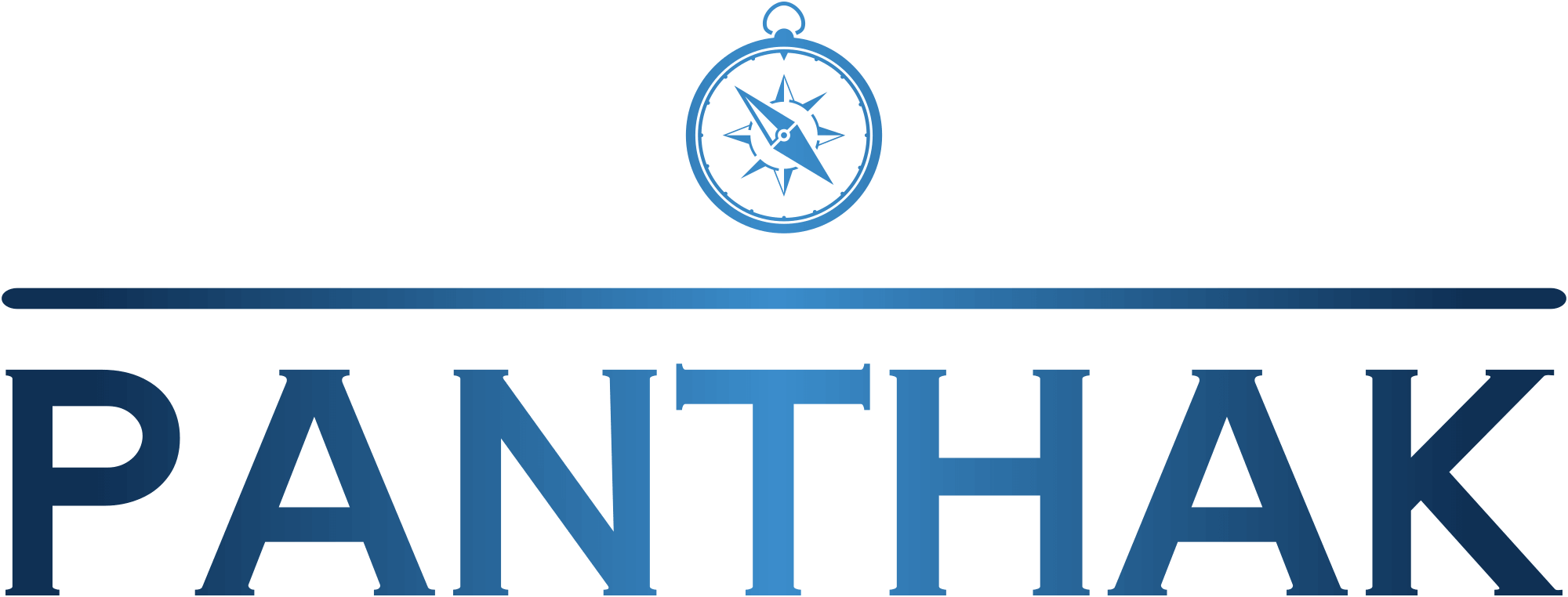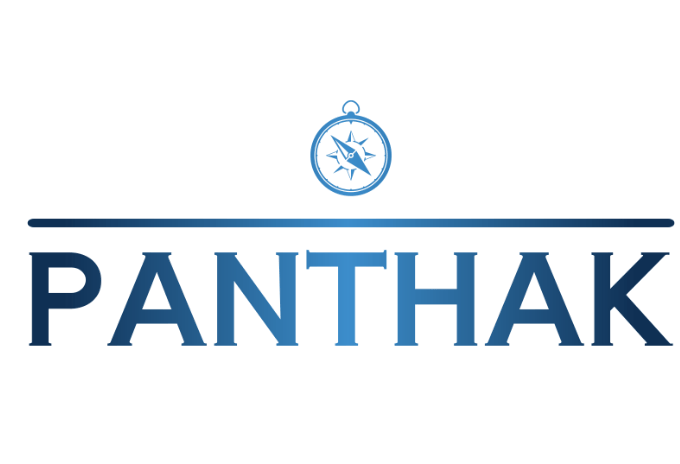Every business owner believes they understand their company inside out. They know their products, their customers, and their market. But here’s the harsh reality that keeps most entrepreneurs awake at night: most businesses are sitting on a ticking time bomb, and they don’t even know it.
The bomb isn’t competition, market changes, or economic downturns. It’s something far more dangerous because it’s completely within their control, yet they choose to ignore it. It’s the systematic neglect of the five critical arms that form the backbone of every successful business operation.
The Invisible Foundation That Makes or Breaks Every Business
Think of your business as a human body. You can have the strongest muscles and the sharpest mind, but if your heart, lungs, nervous system, digestive system, or circulatory system fails, everything else collapses. The same principle applies to business operations.
Digital marketing, financial management, human resource management, software solutions, and operations management aren’t just departments on an organizational chart. They are the vital organs that keep your business alive, growing, and thriving in today’s competitive marketplace.
Yet, most business leaders treat them as afterthoughts, optional expenses, or tasks they can handle themselves when they find time. This approach has led to the staggering failure rate we see across industries, from promising startups to established corporations.
Digital Marketing: The Lifeline Between You and Your Customers
In today’s digital-first world, your business doesn’t exist if it can’t be found online. Digital marketing isn’t about posting random content on social media or running occasional Google ads. It’s the strategic process of building relationships, creating trust, and generating consistent revenue streams through multiple digital channels.
Why Digital Marketing is Critical:
Every day, millions of potential customers search for solutions that your business provides. Without a robust digital marketing strategy, these customers find your competitors instead. Digital marketing encompasses search engine optimization (SEO), social media marketing, content marketing, email marketing, pay-per-click advertising, and conversion rate optimization.
The Real Impact:
Businesses with strong digital marketing strategies see 2.8 times better revenue growth than those without. They build brand recognition, generate qualified leads, and create sustainable customer acquisition systems. More importantly, digital marketing provides measurable results, allowing businesses to optimize their marketing spend for maximum return on investment.
What Happens When It’s Neglected:
Companies that ignore digital marketing face declining visibility, reduced customer acquisition, and increasing customer acquisition costs. They become dependent on word-of-mouth referrals and traditional advertising methods that offer limited reach and poor tracking capabilities. Eventually, they lose market share to competitors who invest in comprehensive digital marketing strategies.
Financial Management: The Compass That Guides Every Business Decision
Money is the fuel that powers business operations, but financial management is the engine that ensures this fuel is used efficiently. It’s not just about keeping books or filing tax returns. Financial management involves cash flow forecasting, budget planning, investment analysis, risk assessment, and strategic financial planning.
Why Financial Management is Critical:
Every business decision has financial implications. From hiring employees to launching new products, from expanding operations to managing inventory, financial management provides the data and insights needed to make informed decisions. It helps businesses maintain healthy cash flow, optimize profitability, and plan for sustainable growth.
The Real Impact:
Companies with strong financial management systems can weather economic downturns, take advantage of growth opportunities, and maintain operational stability during challenging periods. They have clear visibility into their financial performance, can identify cost-saving opportunities, and make strategic investments that drive long-term success.
What Happens When It’s Neglected:
Businesses that neglect financial management face cash flow problems, unexpected expenses, poor investment decisions, and inability to scale effectively. They often struggle with tax compliance, lack financial data for decision-making, and find themselves unprepared for market fluctuations or growth opportunities.
Human Resource Management: The Foundation of Organizational Success
People are the most valuable asset of any business, and human resource management is the system that attracts, develops, and retains this asset. It’s not just about hiring and firing employees. HR management encompasses talent acquisition, employee development, performance management, compensation planning, compliance, and organizational culture development.
Why Human Resource Management is Critical:
The right people with the right skills in the right positions can transform business performance. HR management ensures that businesses have the talent needed to execute their strategies, maintain productivity, and adapt to changing market conditions. It also creates work environments that foster innovation, collaboration, and employee satisfaction.
The Real Impact:
Organizations with effective HR management systems have higher employee retention rates, increased productivity, better customer satisfaction, and stronger financial performance. They build strong company cultures that attract top talent and create competitive advantages through human capital development.
What Happens When It’s Neglected:
Companies that ignore HR management face high employee turnover, low productivity, compliance issues, and poor organizational culture. They struggle to attract and retain quality talent, experience frequent conflicts, and often face legal issues related to employment practices. The cost of replacing employees and lost productivity can be devastating to business performance.
Software Solutions: The Technology Backbone of Modern Business
In today’s digital economy, software solutions are not optional luxuries but essential tools for business survival. This includes customer relationship management (CRM) systems, enterprise resource planning (ERP) solutions, project management tools, accounting software, and automation platforms.
Why Software Solutions are Critical:
Modern businesses generate massive amounts of data and require efficient systems to manage operations, track performance, and serve customers effectively. Software solutions automate routine tasks, improve accuracy, enhance customer experiences, and provide valuable insights for decision-making.
The Real Impact:
Businesses that implement appropriate software solutions see significant improvements in operational efficiency, customer satisfaction, and profitability. They can scale operations without proportionally increasing overhead costs, make data-driven decisions, and respond quickly to market changes.
What Happens When It’s Neglected:
Companies that rely on manual processes or outdated systems face operational inefficiencies, data inconsistencies, poor customer experiences, and inability to scale effectively. They spend excessive time on administrative tasks that could be automated and lack the insights needed for strategic planning.
Operations Management: The Engine That Delivers Value to Customers
Operations management is the systematic process of designing, controlling, and improving business processes to deliver products and services efficiently. It encompasses supply chain management, quality control, process optimization, resource allocation, and performance monitoring.
Why Operations Management is Critical:
Operations management directly impacts customer satisfaction, cost control, and profitability. It ensures that businesses can deliver their products and services consistently, efficiently, and at the quality levels that customers expect. Effective operations management also identifies opportunities for improvement and cost reduction.
The Real Impact:
Organizations with excellent operations management systems can deliver superior customer experiences while maintaining competitive costs. They have reliable processes, consistent quality, and the flexibility to adapt to changing customer demands and market conditions.
What Happens When It’s Neglected:
Businesses that ignore operations management face quality issues, customer complaints, inefficient processes, and higher operational costs. They struggle to meet customer expectations, experience frequent operational problems, and find it difficult to compete effectively in their markets.
The Interconnected Web: Why One Weak Link Destroys Everything
Here’s what most business leaders fail to understand: these five critical arms are not independent departments that can function in isolation. They are interconnected systems where the weakness of one directly impacts the performance of others.
The Domino Effect in Action:
When digital marketing fails to generate quality leads, sales teams struggle to meet targets, affecting financial performance and creating pressure on operations to cut costs. This leads to reduced service quality, which damages the company’s reputation and makes digital marketing even more challenging.
When financial management is poor, businesses can’t invest adequately in HR, leading to talent shortages that overburden existing employees. Overworked employees make mistakes, reducing operational efficiency and customer satisfaction, which ultimately impacts revenue and creates a cycle of financial stress.
When HR management is neglected, high employee turnover disrupts operations, increases training costs, and reduces institutional knowledge. New employees make more mistakes, customer service suffers, and the increased costs strain financial resources.
When software solutions are inadequate, employees waste time on manual tasks, data accuracy suffers, and decision-making becomes slower and less informed. This reduces operational efficiency, impacts customer experiences, and makes it harder to execute effective marketing campaigns.
When operations management is weak, customer satisfaction declines, leading to negative reviews that hurt digital marketing efforts. Poor operations also increase costs, strain financial resources, and create stressful work environments that lead to HR problems.
The Most Common (and Costly) Mistakes Businesses Make
After working with over 300 clients and delivering more than 1500 projects, we’ve identified the most damaging mistakes that businesses make when managing these critical arms:
Mistake 1: The DIY Trap
Many business owners believe they can handle these functions themselves or assign them to existing employees as additional responsibilities. This approach invariably leads to subpar results because each of these areas requires specialized knowledge, dedicated time, and continuous attention.
Mistake 2: The Bargain Hunter Mentality
Some businesses try to cut costs by choosing the cheapest options for critical services. They hire inexperienced freelancers, use inadequate software, or outsource to providers who lack industry expertise. The short-term savings are quickly erased by poor results and the need to fix problems later.
Mistake 3: The Siloed Approach
Many organizations treat these arms as separate, unrelated functions. They don’t ensure proper communication and coordination between departments, leading to conflicting objectives, duplicated efforts, and missed opportunities for synergy.
Mistake 4: The Technology First Fallacy
Some businesses believe that implementing new technology will automatically solve their problems. They invest in expensive software or systems without addressing underlying process issues or ensuring proper integration with existing operations.
Mistake 5: The Growth Before Foundation Error
Many companies focus on rapid growth without building strong foundations in these critical areas. They scale operations without improving processes, hire more people without proper HR systems, or increase marketing spend without proper financial controls.
Mistake 6: The Reactive Management Style
Instead of proactive planning and strategic thinking, many businesses only address problems after they become critical. They wait until cash flow becomes tight before focusing on financial management, or until key employees leave before investing in HR systems.
The Panthak Approach: Integrated Business Solutions for Sustainable Growth
At Panthak Business Solutions, we understand that businesses need more than individual services; they need integrated solutions that address all critical business arms simultaneously. Our approach is based on three core principles that have helped us achieve a 97% client retention rate:
Principle 1: Holistic Assessment and Strategic Planning
We begin every engagement with a comprehensive analysis of your current operations across all five critical arms. This assessment identifies strengths, weaknesses, interdependencies, and opportunities for improvement. We don’t just look at individual departments; we examine how they work together and where gaps exist in coordination and communication.
Our strategic planning process creates a roadmap that addresses immediate needs while building long-term capabilities. We prioritize initiatives based on their impact on overall business performance and ensure that improvements in one area support and enhance the others.
Principle 2: Integrated Implementation and Continuous Optimization
Rather than implementing solutions in isolation, we coordinate improvements across all critical arms to maximize synergy and minimize disruption to ongoing operations. Our implementation approach ensures that new systems, processes, and strategies work together seamlessly.
We also provide ongoing optimization services because business needs evolve continuously. Regular monitoring, analysis, and adjustment ensure that your critical business arms continue to support your growth objectives as your company scales.
Principle 3: Knowledge Transfer and Capability Building
Our goal isn’t just to solve immediate problems but to build internal capabilities that enable sustainable success. We work closely with your team to transfer knowledge, develop skills, and create systems that reduce dependence on external support over time.
This approach has enabled our clients to achieve measurable improvements in operational efficiency, financial performance, and market position while building stronger, more resilient organizations.
Our Comprehensive Service Portfolio
Digital Marketing Excellence
Our digital marketing services go beyond basic social media management and advertising. We develop comprehensive digital strategies that include search engine optimization, content marketing, social media strategy, email marketing, conversion optimization, and marketing automation. Our approach focuses on building sustainable customer acquisition systems that generate consistent, qualified leads.
We also provide detailed analytics and reporting that show exactly how digital marketing investments translate into business results. This data-driven approach allows continuous optimization and ensures maximum return on marketing investments.
Strategic Financial Management
Our financial management services include cash flow forecasting, budgeting and financial planning, cost analysis and optimization, investment planning, risk assessment, and compliance support. We help businesses establish financial controls and reporting systems that provide real-time visibility into financial performance.
We also assist with strategic financial decisions such as funding options, expansion planning, and investment evaluation. Our financial experts work as strategic partners to help businesses make informed decisions that support long-term growth and profitability.
Human Resource Transformation
Our HR services encompass talent acquisition and recruitment, employee development and training, performance management systems, compensation and benefits planning, compliance and policy development, and organizational culture enhancement.
We help businesses build HR systems that attract and retain top talent while creating work environments that foster productivity, innovation, and employee satisfaction. Our approach includes both strategic HR planning and operational support to handle day-to-day HR needs.
Technology and Software Solutions
We provide comprehensive technology solutions including CRM and ERP system implementation, project management and collaboration tools, accounting and financial software, automation and workflow optimization, and integration and data management solutions.
Our technology experts help businesses select, implement, and optimize software solutions that improve operational efficiency, enhance customer experiences, and provide valuable business insights. We focus on solutions that integrate well with existing systems and scale with business growth.
Operations Excellence and Process Optimization
Our operations management services include process analysis and optimization, quality management systems, supply chain and vendor management, performance monitoring and improvement, and change management support.
We help businesses create efficient, reliable operations that consistently deliver value to customers while controlling costs and maintaining quality standards. Our approach includes both immediate improvements and long-term capability building.
The Proof: Real Results from Integrated Business Solutions
Our track record speaks for itself: over 300 satisfied clients, more than 1500 successful projects, and a 97% client retention rate. These results reflect our commitment to delivering measurable improvements in business performance through integrated solutions.
Our clients typically see improvements in revenue growth, operational efficiency, customer satisfaction, employee retention, and profitability within the first year of engagement. More importantly, they build stronger, more resilient organizations that can adapt to changing market conditions and continue growing sustainably.
The Cost of Inaction: What Happens When You Wait
Every day that passes without addressing weaknesses in these critical business arms represents lost opportunities, increased risks, and competitive disadvantages. The longer problems persist, the more expensive and disruptive they become to fix.
Businesses that continue to neglect these areas face declining performance, increasing operational challenges, and eventually, business failure. The statistics are clear: companies that invest in comprehensive business solutions significantly outperform those that don’t.
Your Next Step: Building a Foundation for Long-term Success
The question isn’t whether your business needs attention in these critical areas; the question is whether you’re ready to take action before problems become crises. Successful businesses recognize that investing in these foundational capabilities is not an expense but a strategic investment that drives sustainable growth and competitive advantage.
At Panthak Business Solutions, we’re ready to help you assess your current situation, develop a comprehensive improvement strategy, and implement integrated solutions that address all your critical business needs. Our proven approach has helped hundreds of businesses transform their operations and achieve sustainable success.
The choice is yours: continue struggling with fragmented solutions and reactive problem-solving, or invest in the integrated approach that creates lasting competitive advantages and sustainable growth.
Don’t wait until problems become crises. Contact Panthak Business Solutions today to schedule a comprehensive business assessment and discover how integrated solutions can transform your business performance.
Contact Information:
- Website: https://panthak.com
- Email: [email protected]
- Phone: +91 93620 64513
Your business deserves better than band-aid solutions and reactive management. It deserves the integrated approach that builds lasting success.




